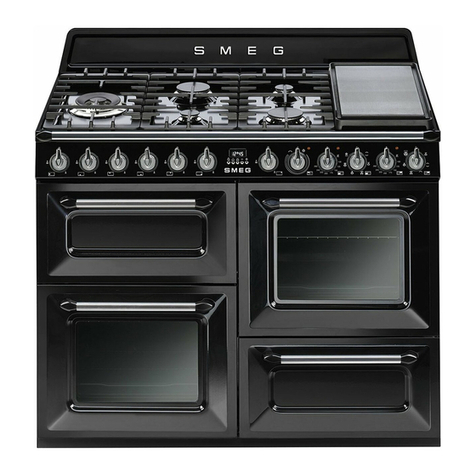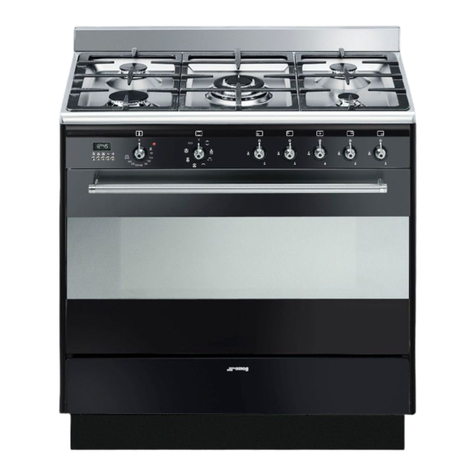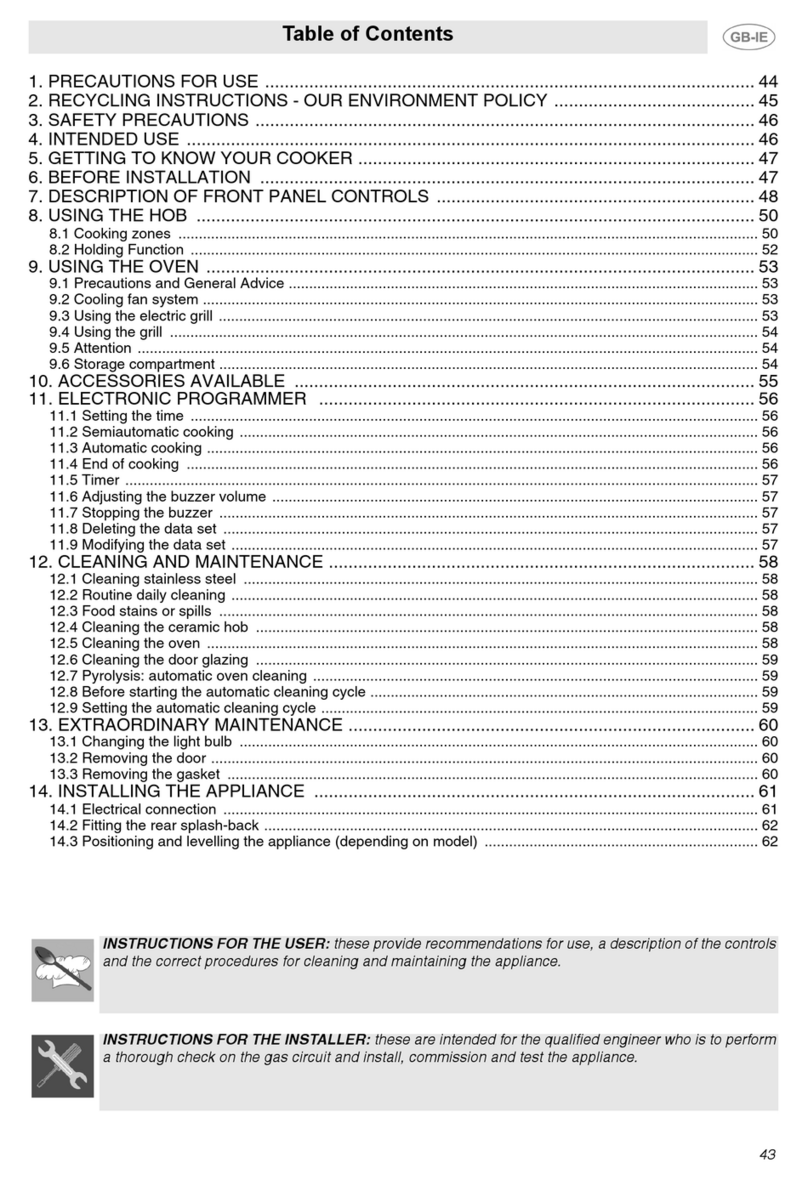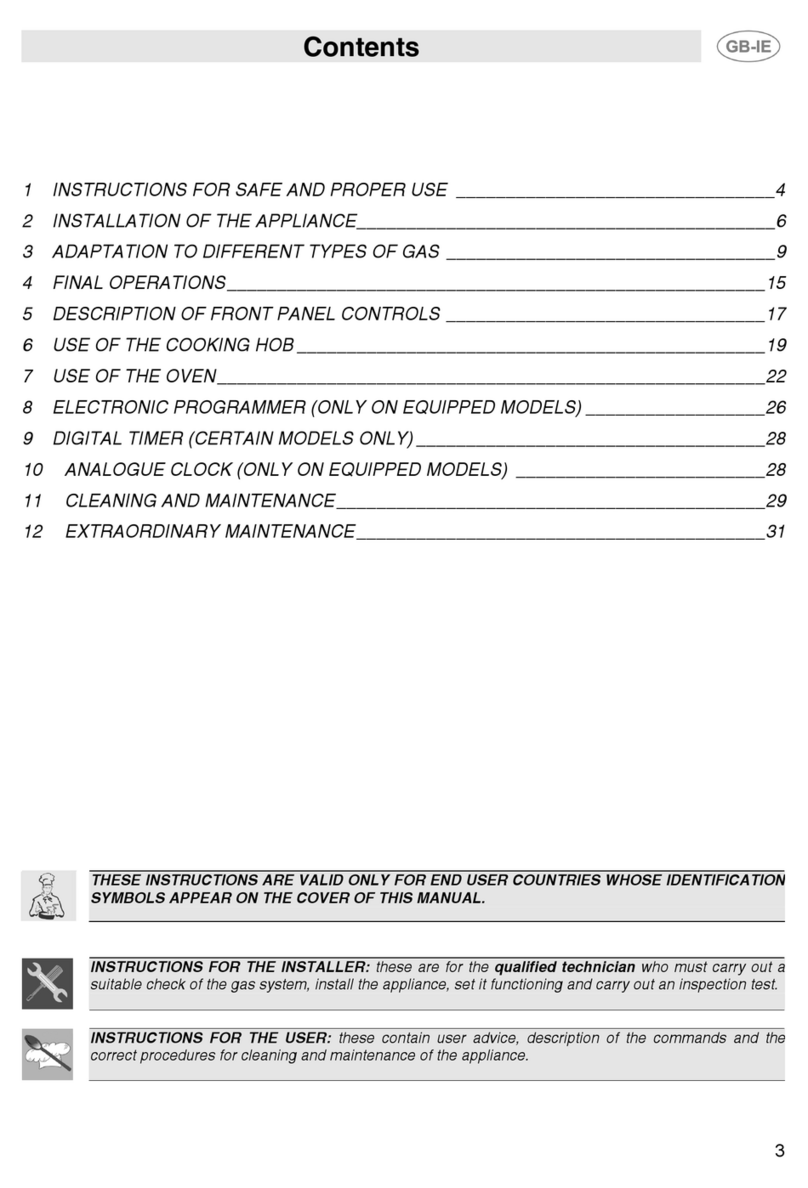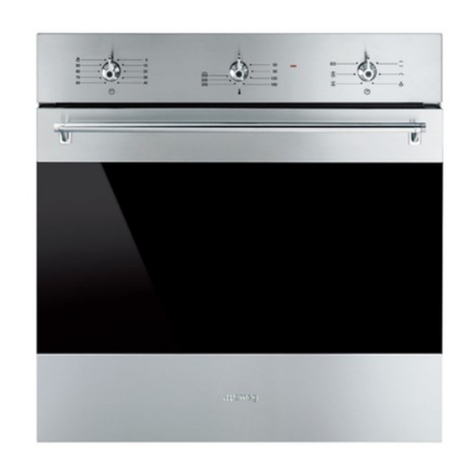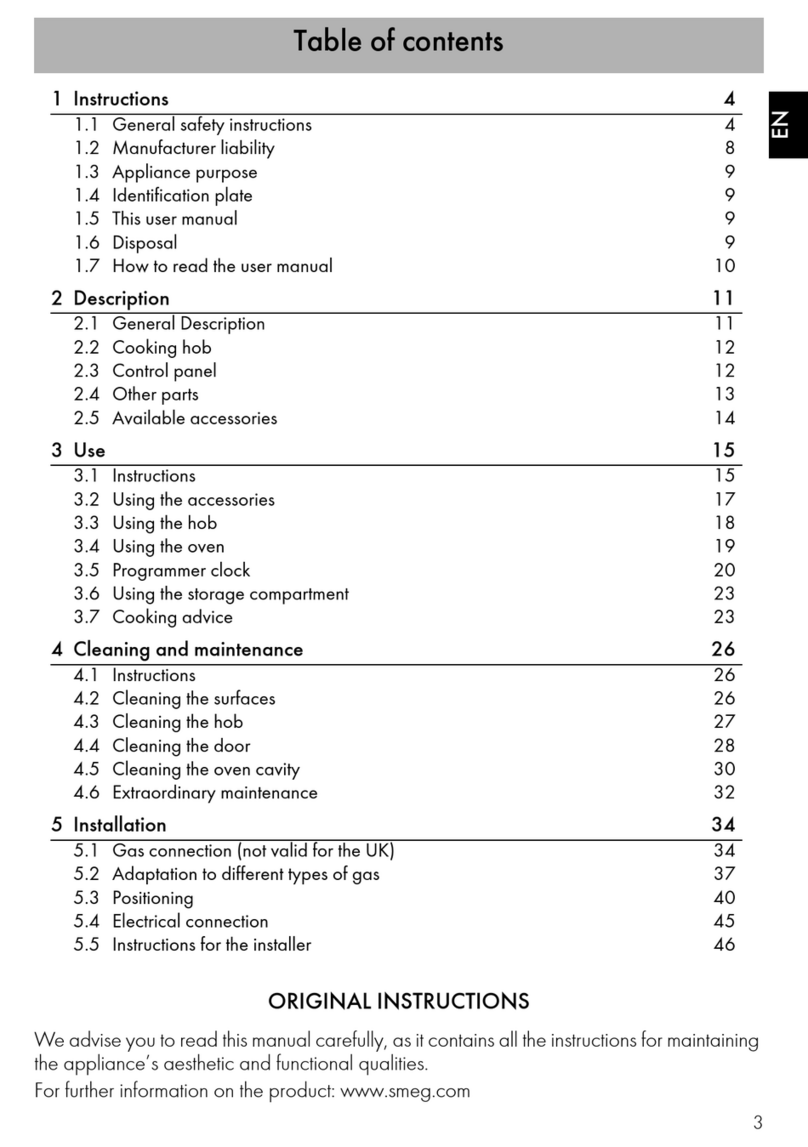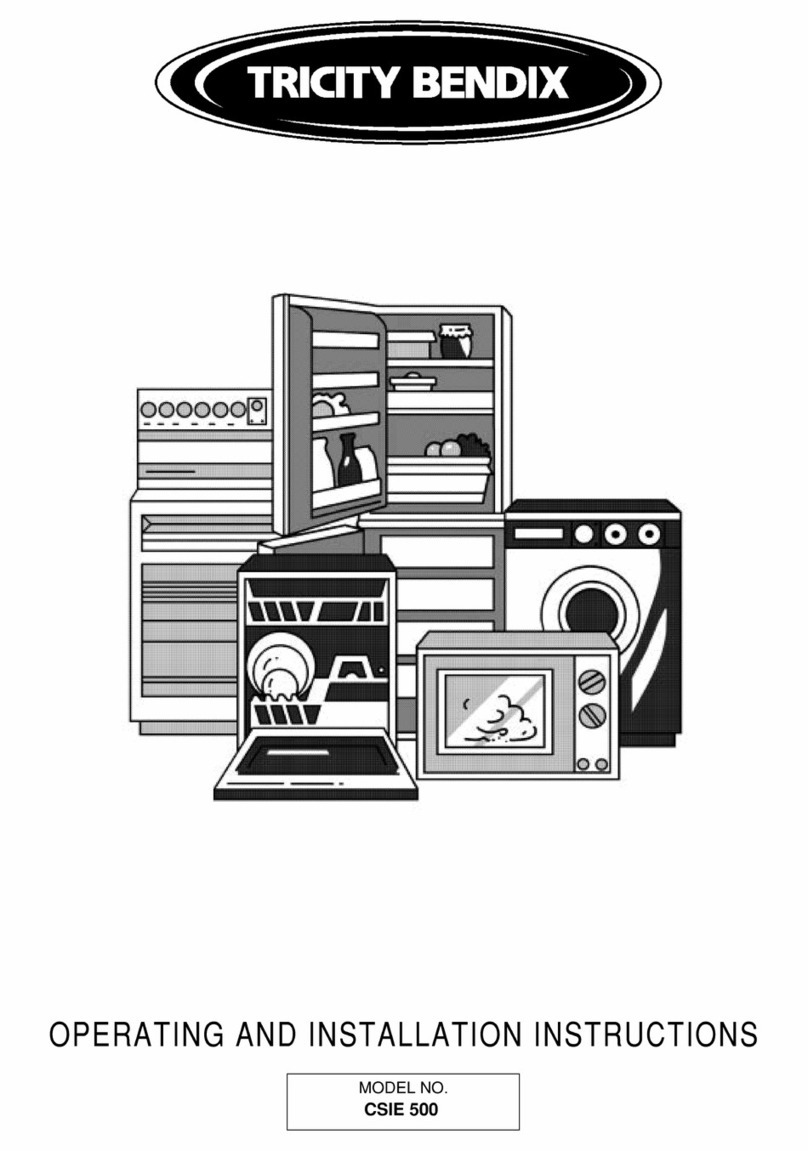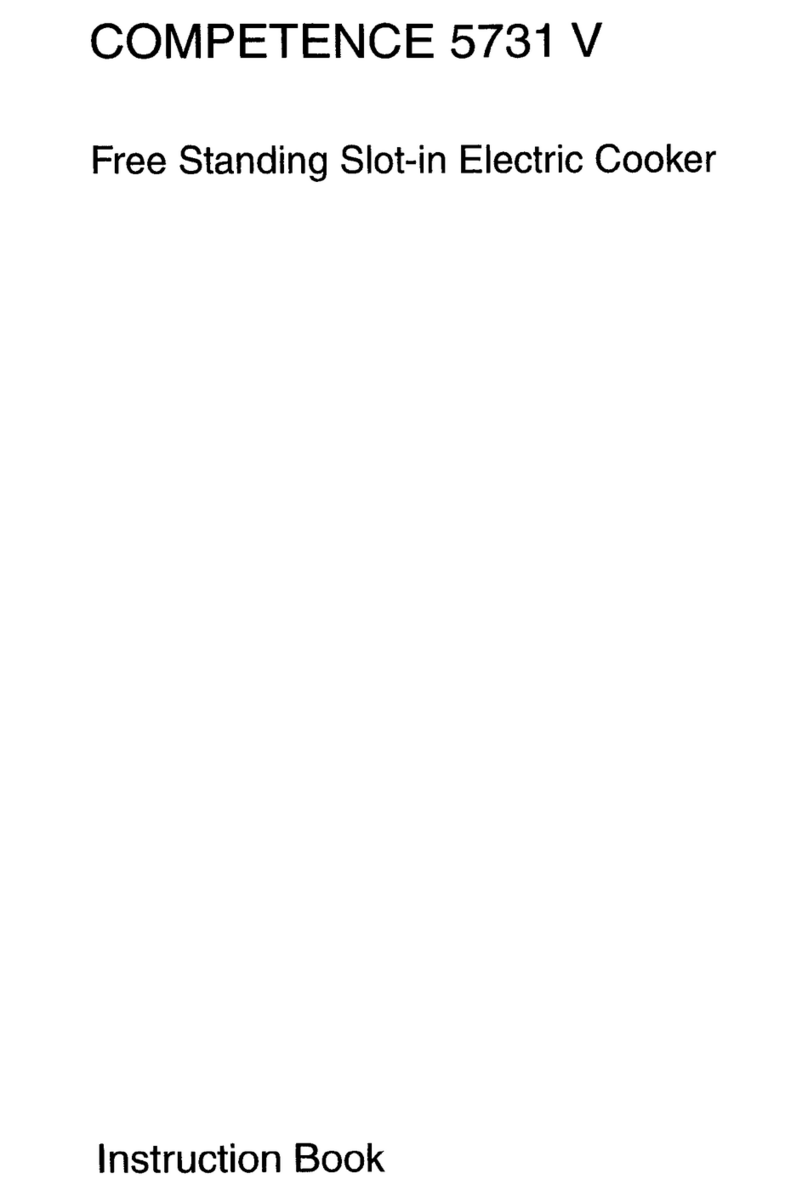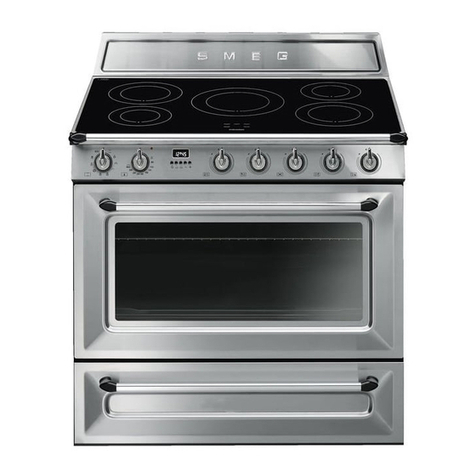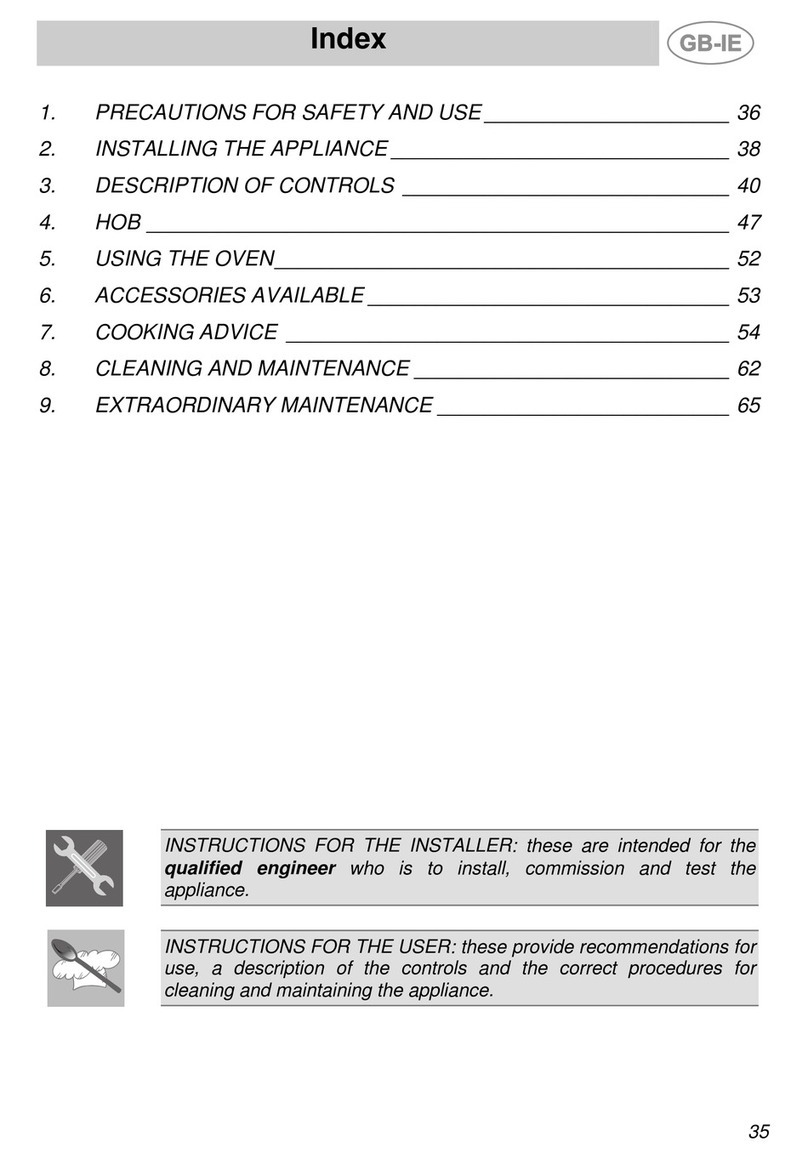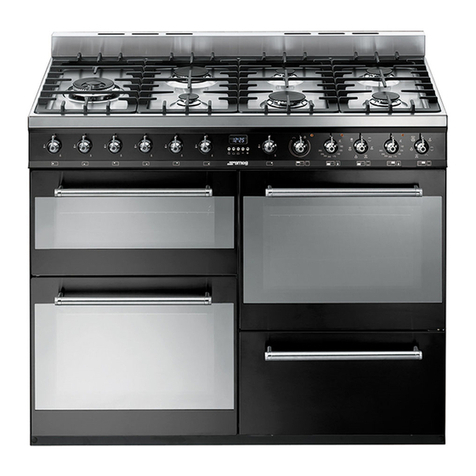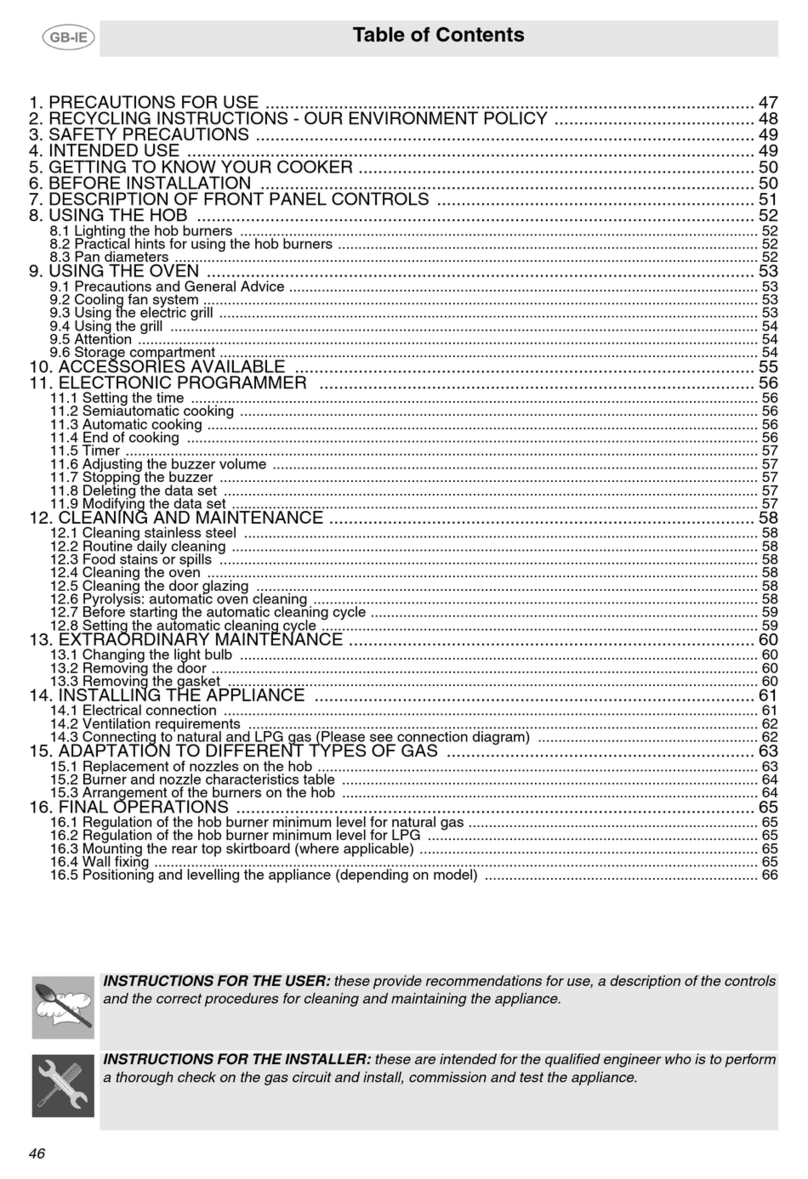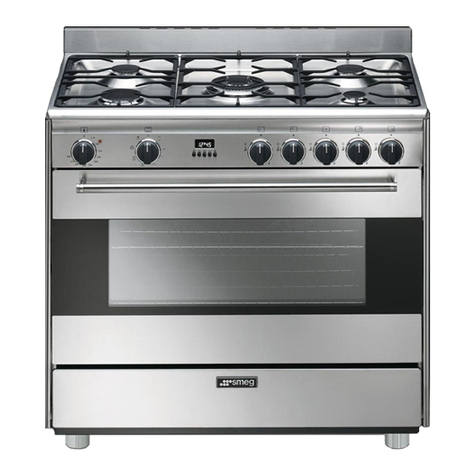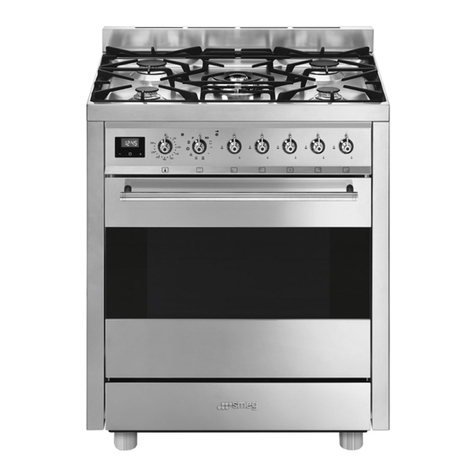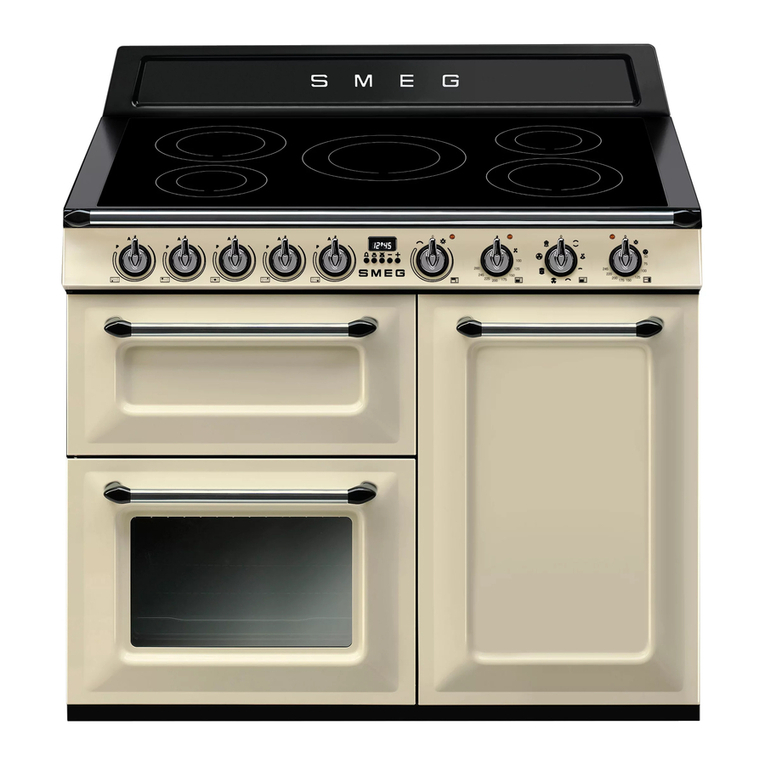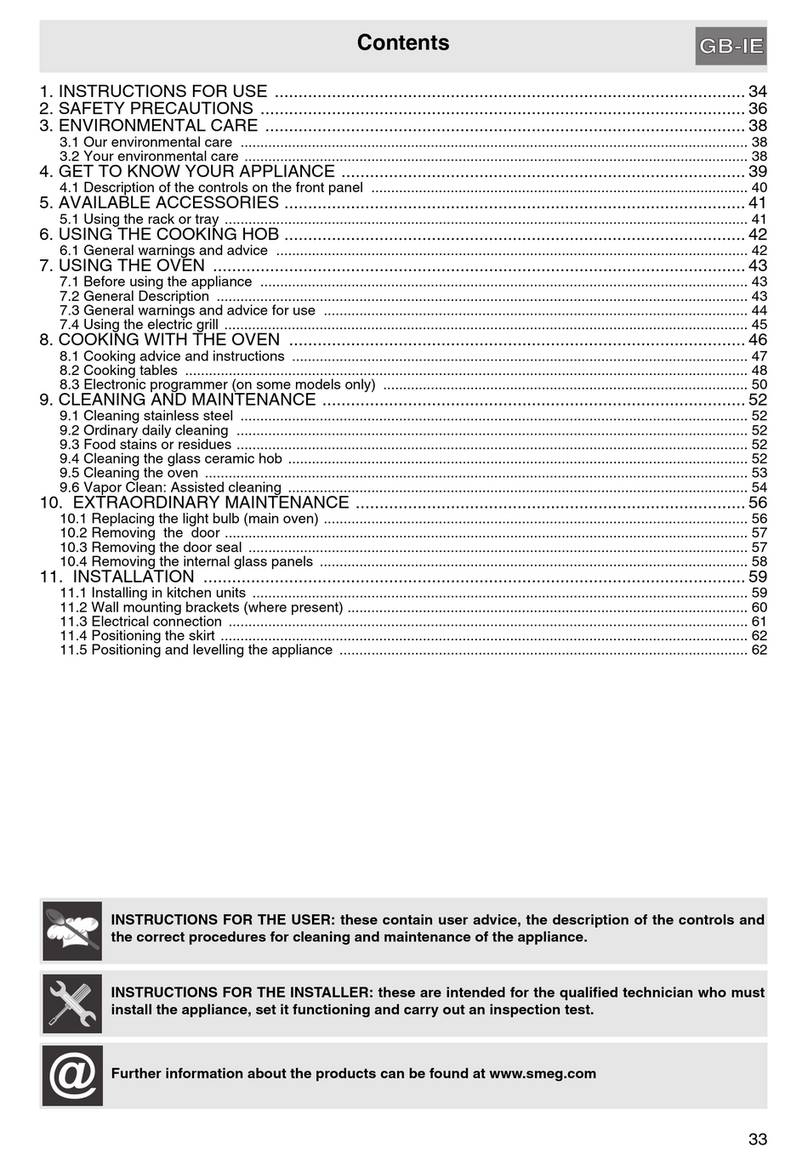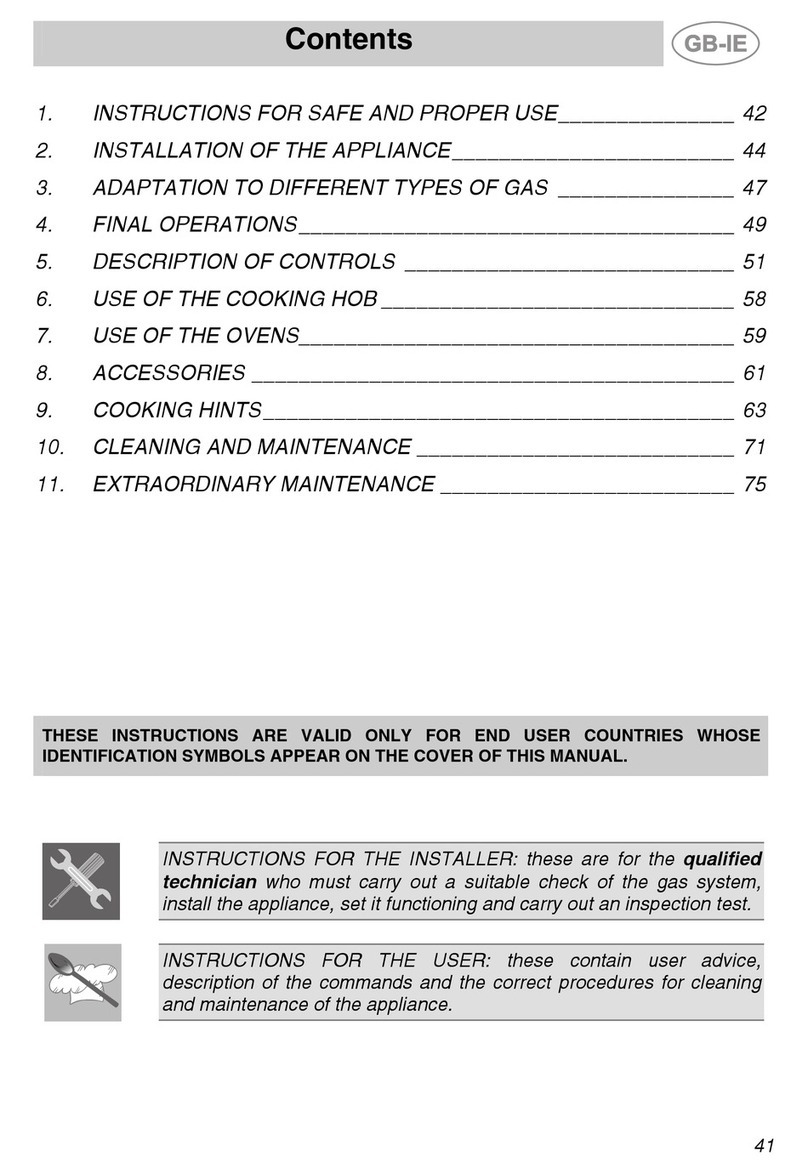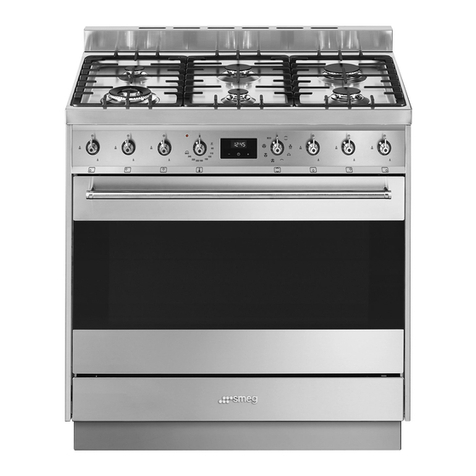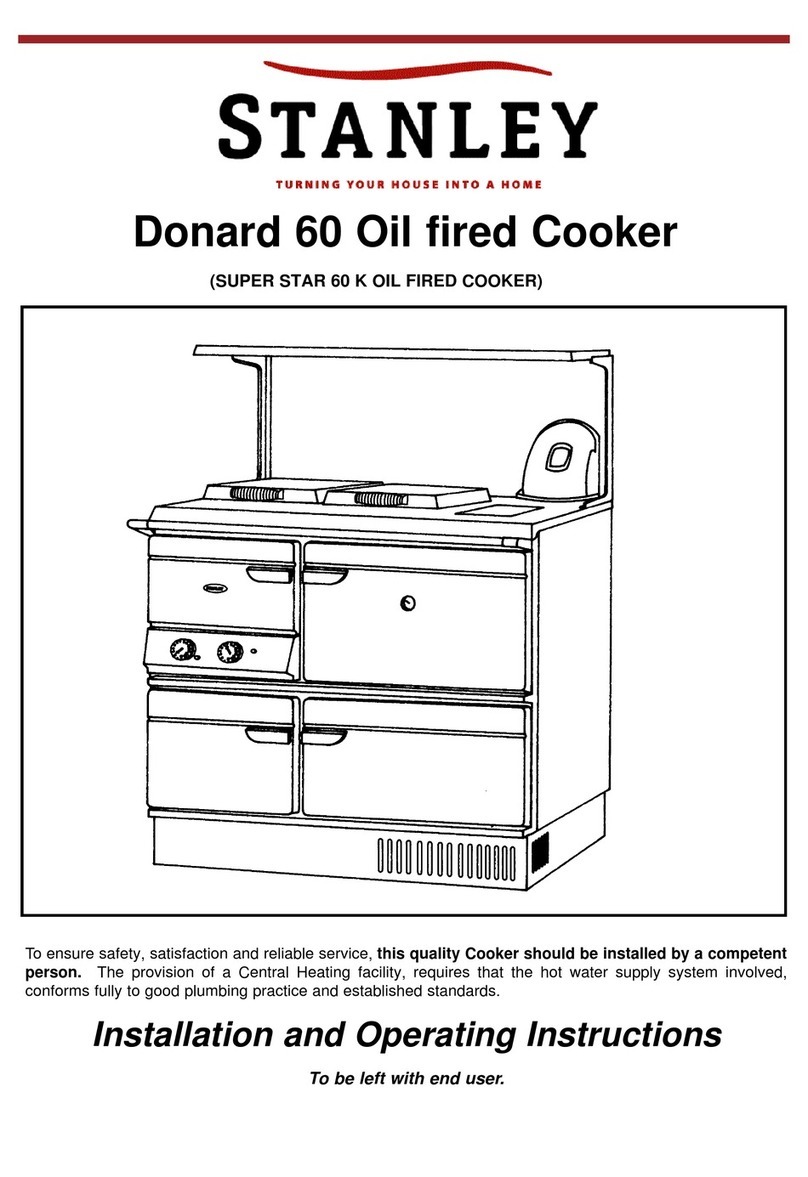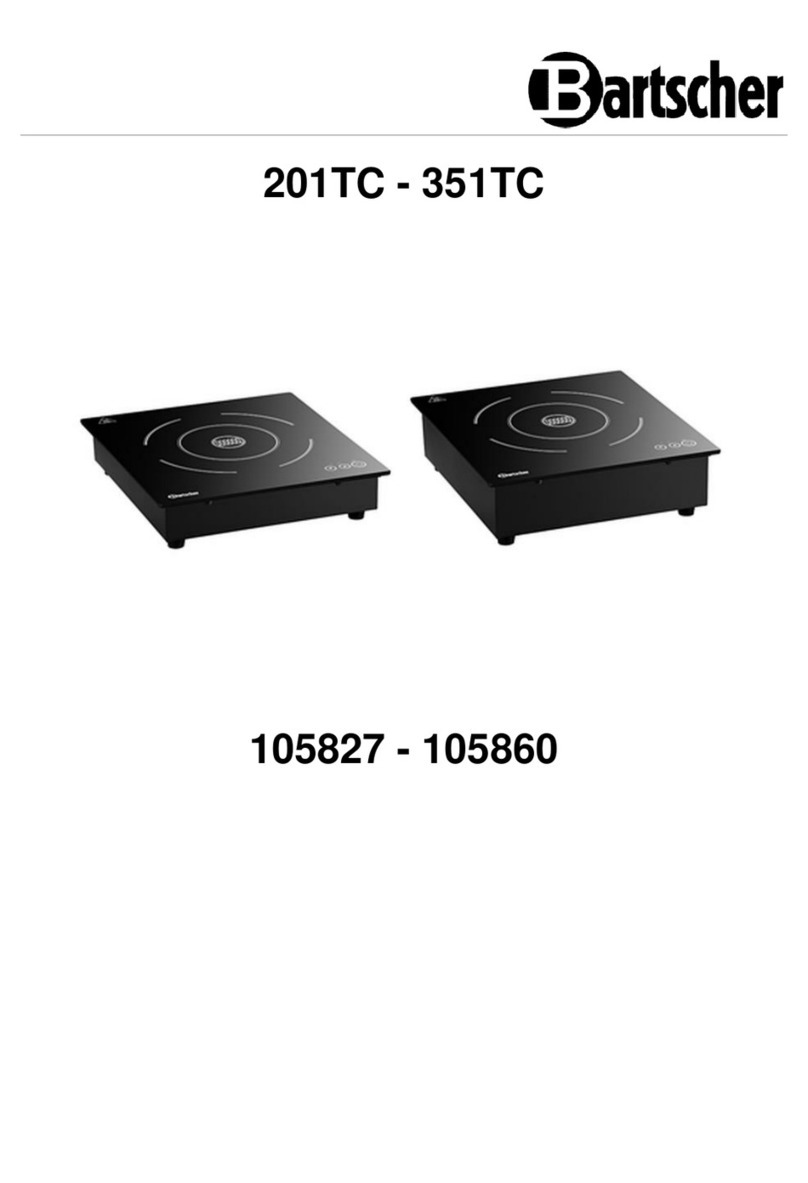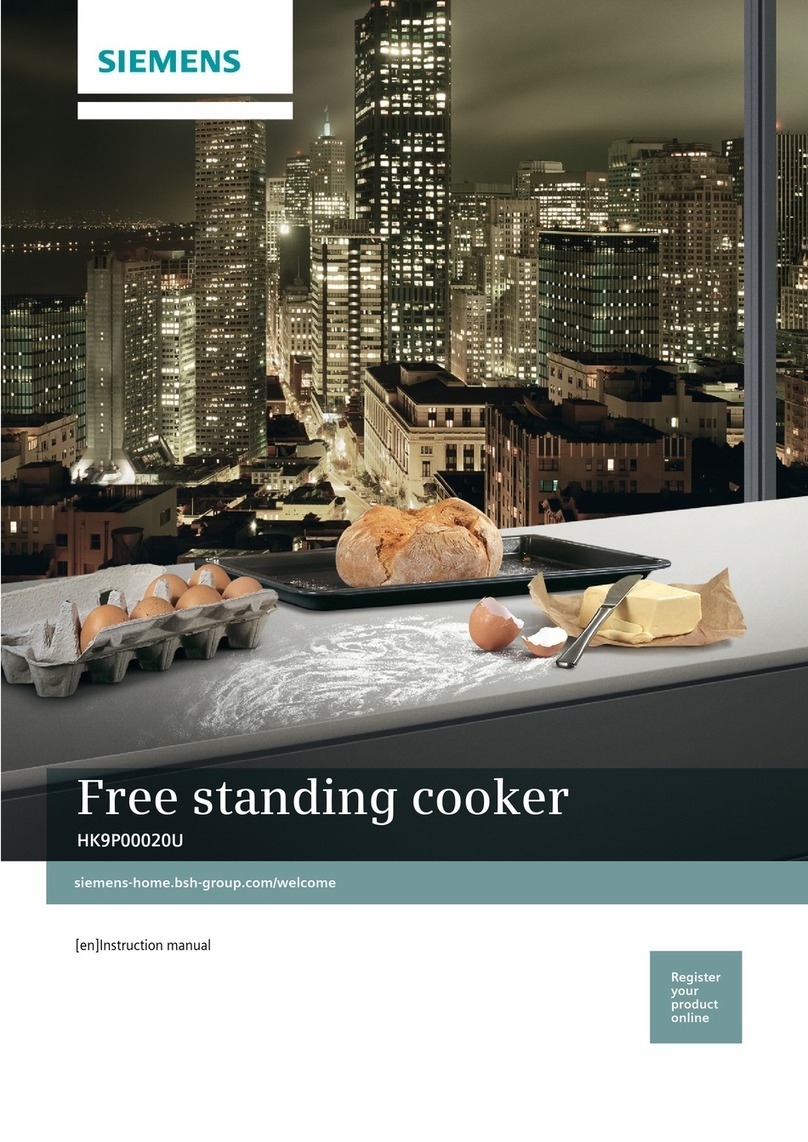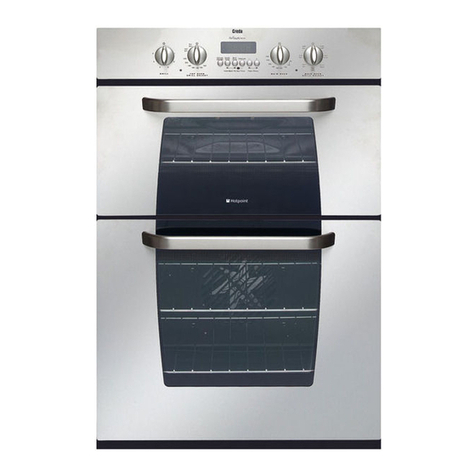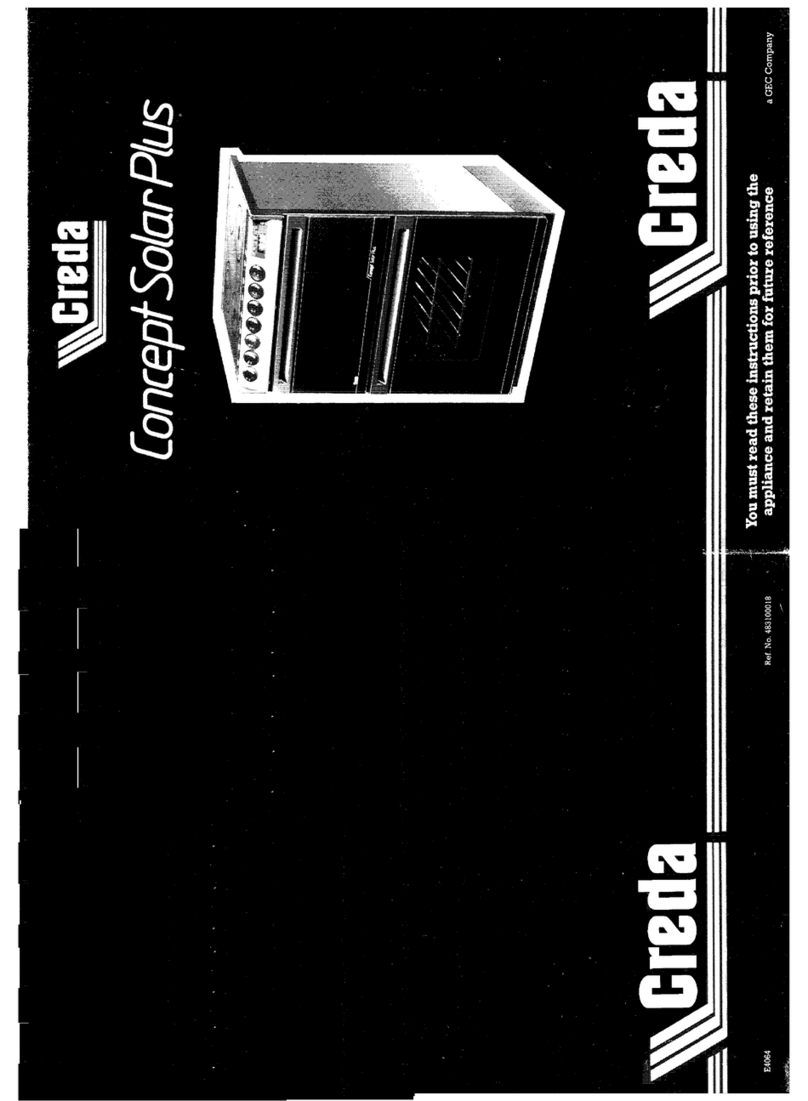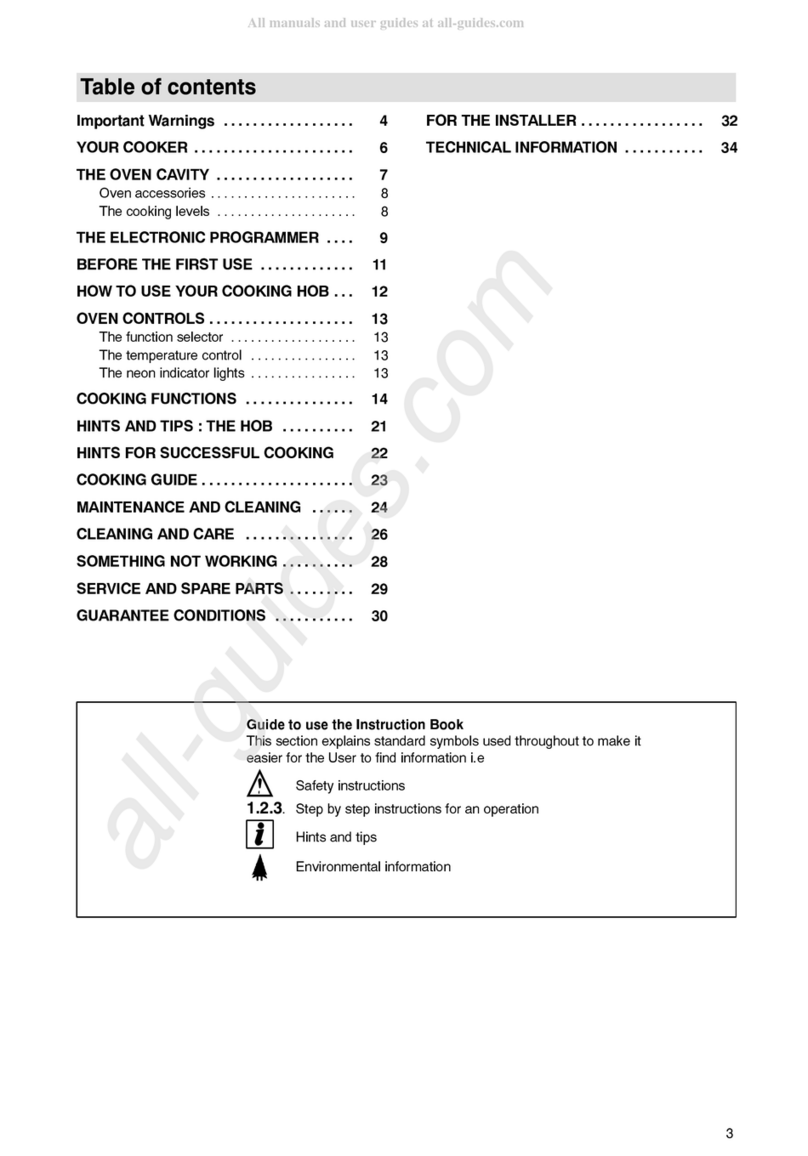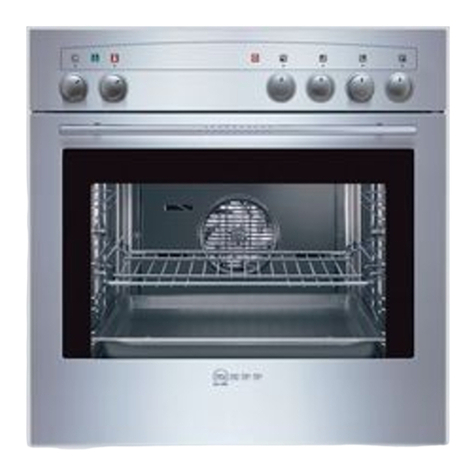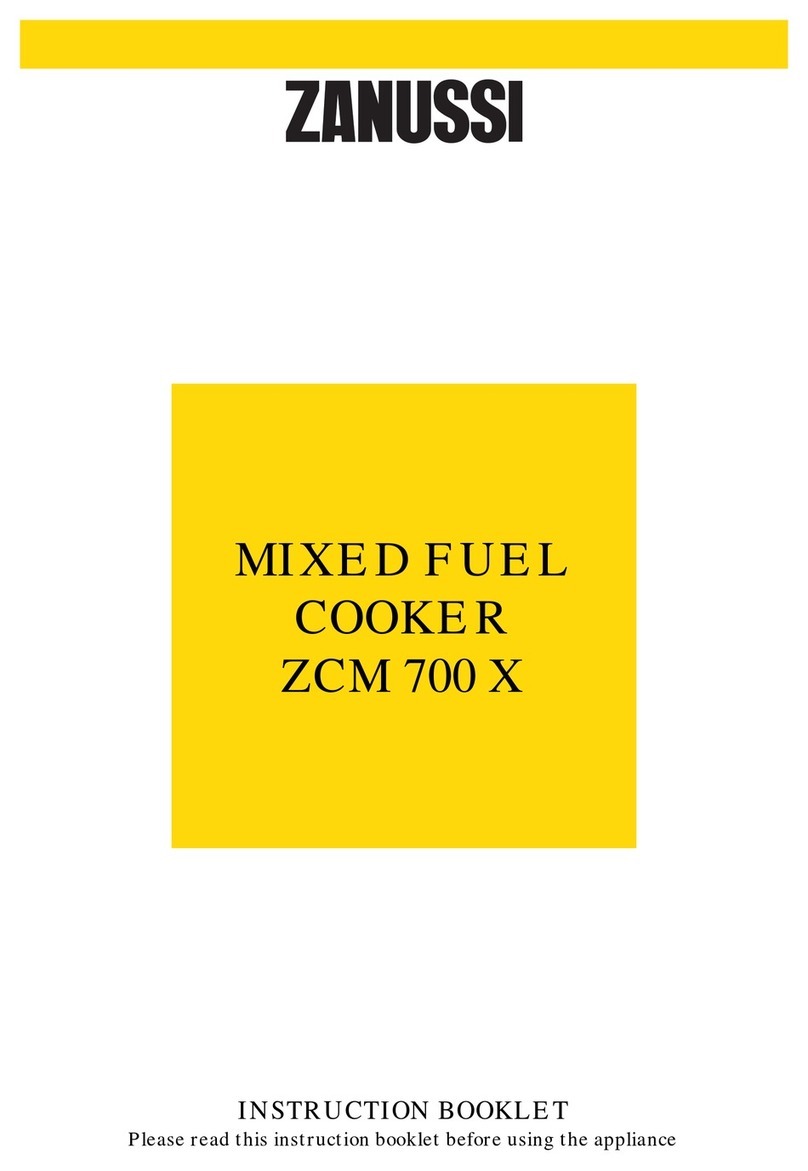Description
8
Hob burner knobs (2)
Useful for lighting and adjust the hob
burners.
Press and turn the knobs anti-clockwise to
the value to light the relative burners.
Turn the knobs to the zone between the
maximum and minimum setting to
adjust the flame.
Return the knobs to the position to turn
off the burners.
Programming clock (3)
Useful for displaying the current time, set
programmed cooking operations and
program the timer.
Auxiliary oven variable grill knob (4)
It turns on the light inside the oven or starts
the grill heating element to a temperature
ranging from a minimum of 50°C to a
maximum of 245°C.
Auxiliary oven variable grill indicator
light (5)
The indicator light comes on to indicate that
the auxiliary oven is heating up. It turns off
as soon as it reaches the set temperature. It
flashes regularly to indicate that the
temperature set inside the oven is kept
constant.
Lower multifunction oven temperature
knob (6)
This knob allows you to select the cooking
temperature.
Turn the knob clockwise to the required
value, between the minimum and maximum
settings.
Lower multifunction oven indicator light
(7)
The indicator light comes on to indicate that
the oven is heating up. It turns off as soon as
it reaches the set temperature. It flashes
regularly to indicate that the temperature set
inside the oven is kept constant.
Lower multifunction oven function knob
(8)
The oven's various functions are suitable for
different cooking modes. After selecting the
required function, set the cooking
temperature using the temperature knob.
Upper multifunction oven temperature
knob (9)
This knob allows you to select the cooking
temperature and the Vapor Clean
temperature.
Turn the knob clockwise to the required
value, between the minimum and maximum
settings.
Upper multifunction oven indicator light
(10)
The indicator light comes on to indicate that
the oven is heating up. It turns off as soon as
it reaches the set temperature. It flashes
regularly to indicate that the temperature set
inside the oven is kept constant.
Upper multifunction oven function knob
(11)
The oven's various functions are suitable for
different cooking modes. After selecting the
required function, set the cooking
temperature using the temperature knob.
